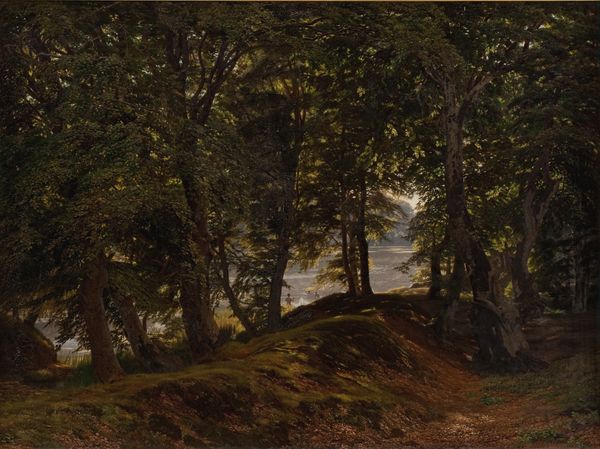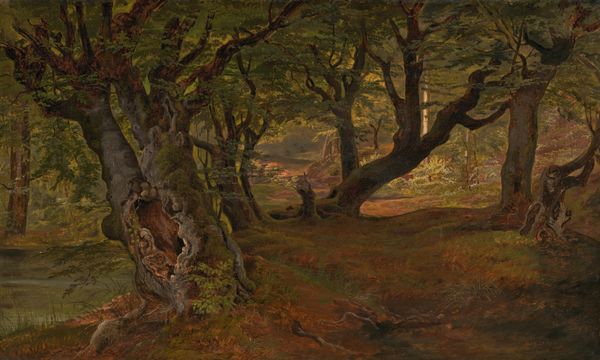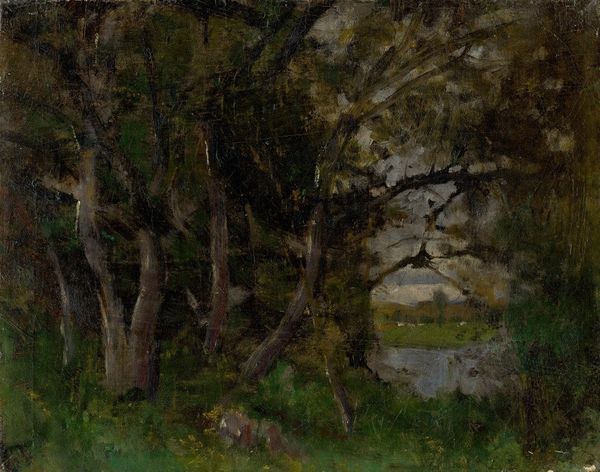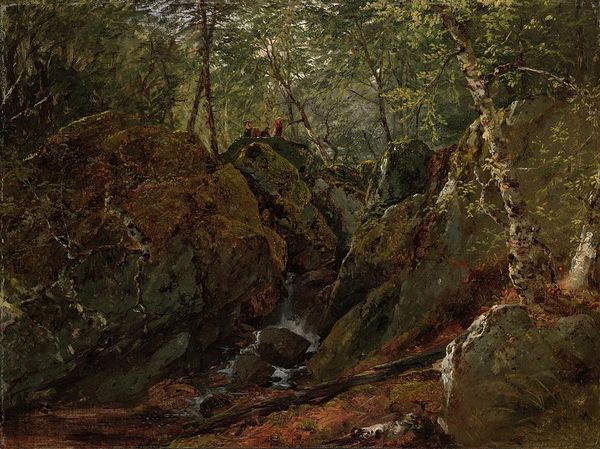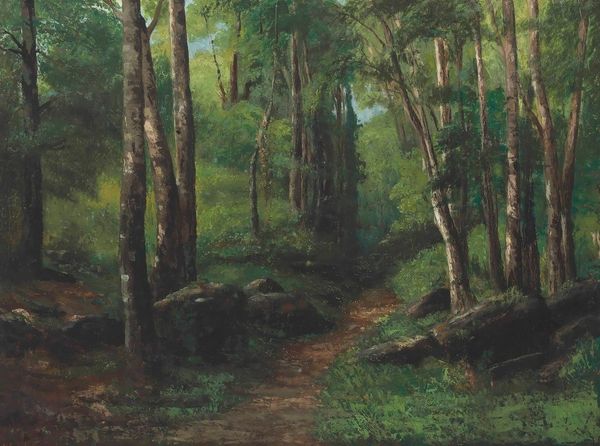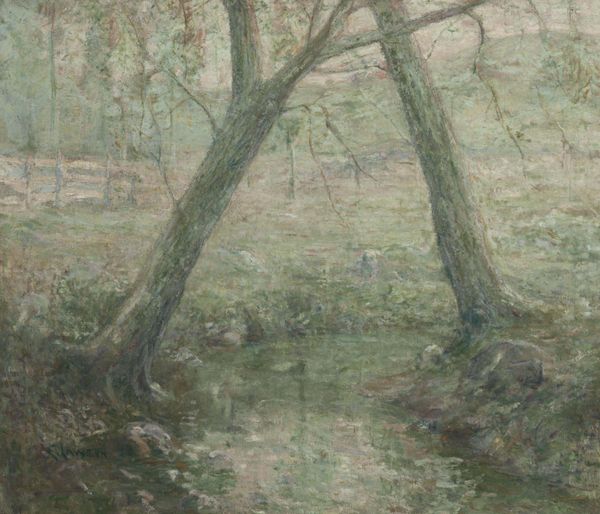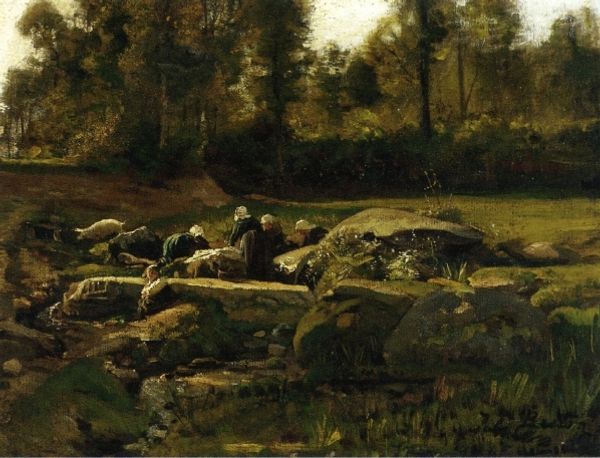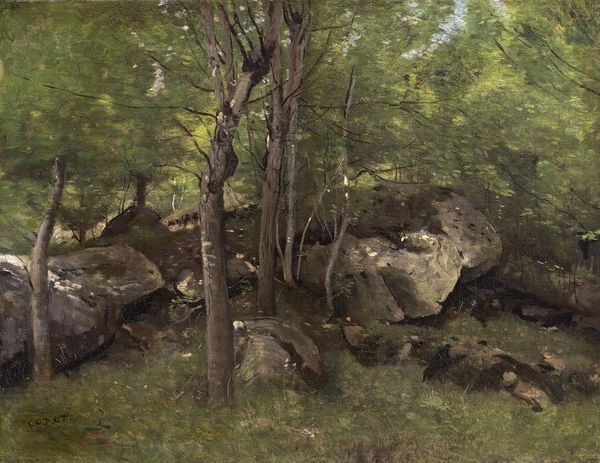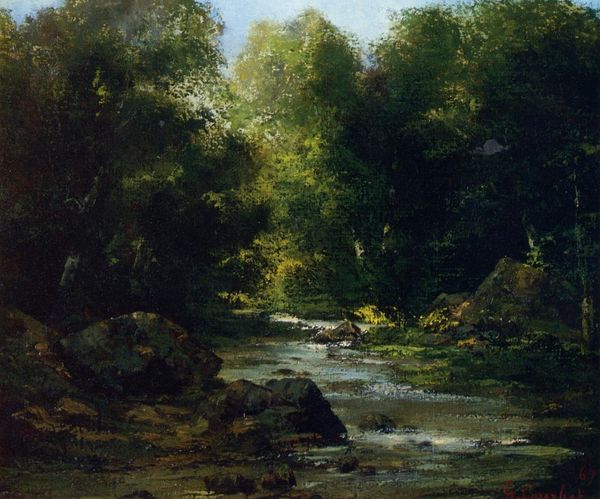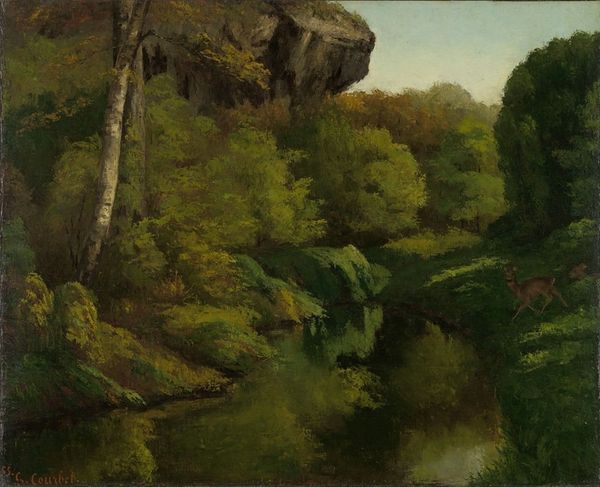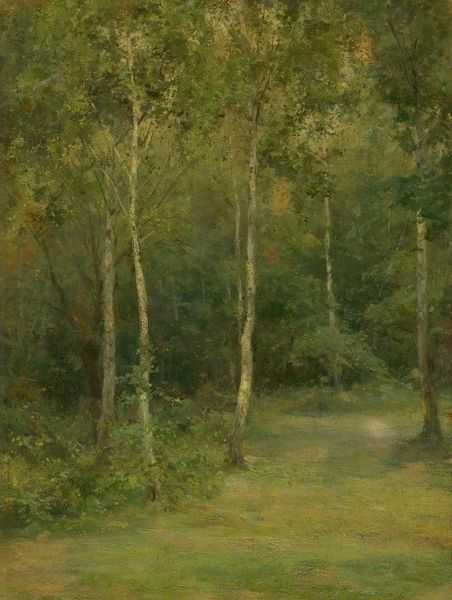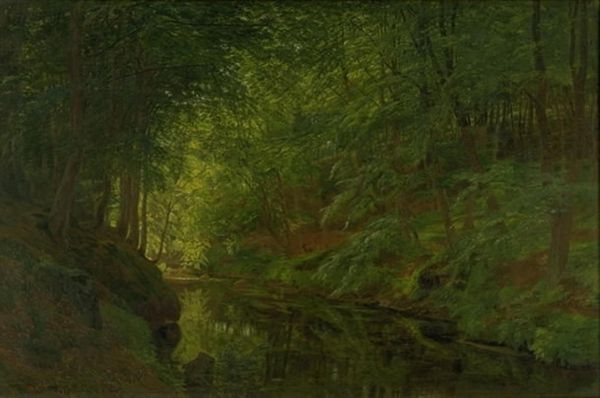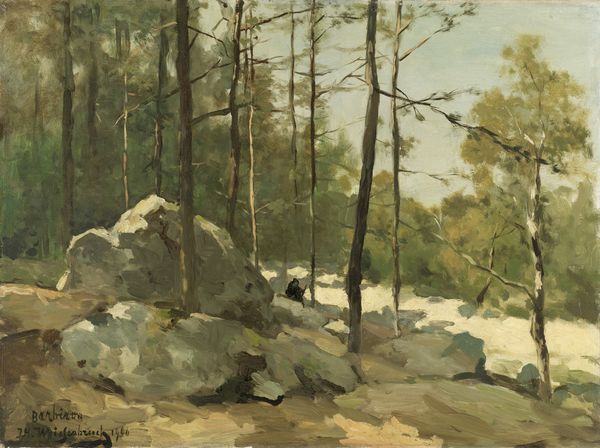
painting, oil-paint, impasto
#
painting
#
oil-paint
#
landscape
#
impasto
#
watercolor
Copyright: Public Domain: Artvee
Editor: Here we have "Trees," an oil painting, probably done sometime between 1900 and 1930, by Ľudovít Čordák. It strikes me as quite a moody scene, almost monochromatic in its shades of brown and green. What do you see in this piece from a more formalist perspective? Curator: Indeed. Look at the deliberate arrangement of the tree trunks – vertical lines providing structure against the more amorphous ground. Consider how the impasto technique captures the texture of the bark and foliage. Note how the dark colors limit depth, and consider the semiotics of visual compression. Do these details contribute to the artwork? Editor: I see that now. The brushstrokes really do emphasize the textures and draw your eye to them, and the dark shades add mystery! It’s more about the arrangement of visual elements than realism, which makes sense for this style. Curator: Precisely! Form triumphs over direct representation. The artist seems less concerned with photographic accuracy, focusing instead on the formal interplay of line, texture, and color, as we have discussed. Consider also, the effect the subdued tones have, compared with impressionist art? Editor: That makes sense. Thinking about the structural relationships makes me appreciate how carefully crafted it is. Thanks, this has definitely changed how I see the painting! Curator: The experience of visual analysis allows us to access our appreciation. Perhaps the artist intended us to read the brushstrokes rather than interpret them!
Comments
No comments
Be the first to comment and join the conversation on the ultimate creative platform.
